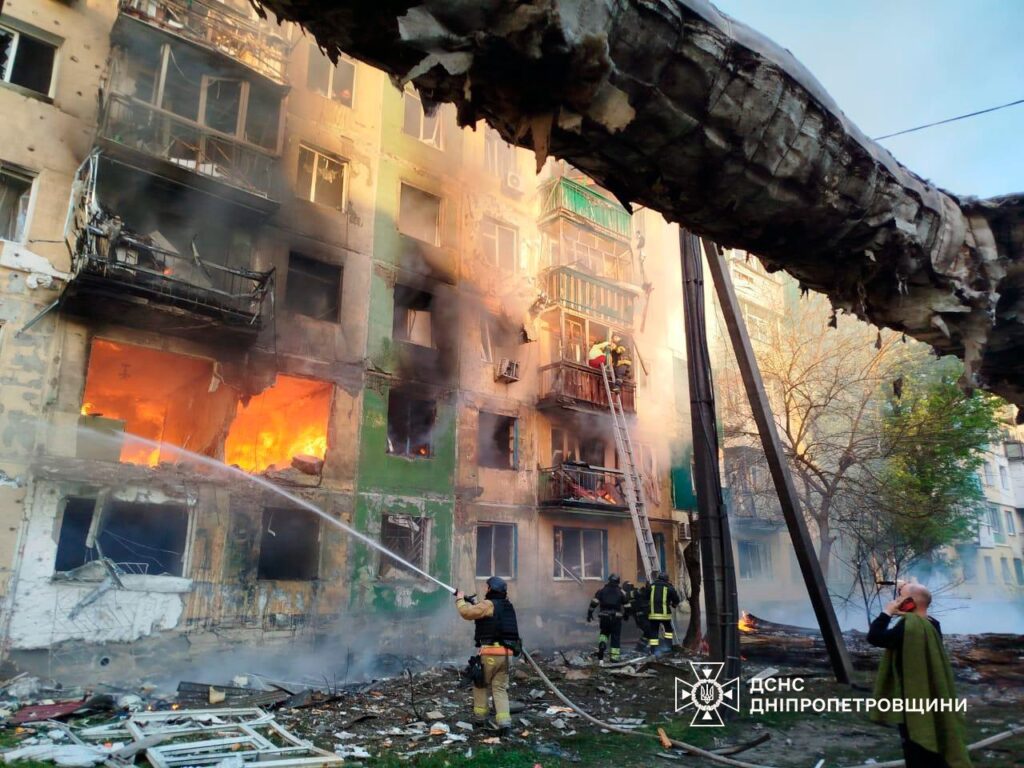Liutyi drones strike deep into Russia, hitting Izhevsk military plant about 1,400 km away (video)

On 1 July 2025, Ukrainian strike drones carried out a major long-range attack on Russian military infrastructure, striking the Kupol Electromechanical Plant in Izhevsk, about 1,400 kilometers from Ukraine. The facility is a major site for the production of Tor air defense systems and combat UAVs.
Ukrainian Liutyi drones target Kupol
Multiple clips from Izhevsk, shared by local residents, confirm that Ukrainian Liutyi drones struck the Kupol Electromechanical Plant in the early morning of 1 July.
Eyewitness footage captured explosions and subsequent fires at the site. Ukrainian Telegram channels Exilenova+ and CyberBoroshno geolocated the strike site based on available videos. Their analysis confirmed that the main facility of Kupol had been hit.
Exilenova+ and Ukraine Context Telegram channels shared videos from Izhevsk showing a Liutyi flyover, strikes, and the aftermath, including fires at the facility.
Based on footage, Telegram channels Exilenova+ and CyberBoroshno confirmed that the Kupol plant was the target of the attack. pic.twitter.com/sC1xOAgUiw
— Euromaidan Press (@EuromaidanPress) July 1, 2025
Videos reveal that Russian personnel attempted to shoot down incoming UAVs using small arms fire.
This long-range attack inside Russia occurred simultaneously with Ukrainian strikes in occupied Luhansk, Donetsk, and Crimea:

Ukrainian drones just lit up Russian-occupied Crimea, Donetsk, and Luhansk — here’s how (video)
Astra confirms strike and location
According to the Russian news Telegram channel Astra, at least two drones attacked the Kupol factory five minutes apart. The videos showed a high chimney characteristic of the plant’s premises and a tall residential building at 7A 30 Let Pobedy Street, located one block away from the facility.
Telegram channel Ukraine Context shared footage showing a flyover of the Ukrainian Liutyi drones in Izhevsk, and the strikes on the military plant.
— Euromaidan Press (@EuromaidanPress) July 1, 2025
One of the clips features the sounds of secondary detonations before a larger explosion. pic.twitter.com/VnU7yk61UM
Kupol’s strategic role and sanctions
Founded in 1957, Kupol is one of Russia’s key defense enterprises. According to its director Fanil Ziyatdinov, as cited by Rossiyskaya Gazeta in 2023, the factory also produces Samam-M1 and Adjutant training complexes and services them. In July 2023, Reuters reported that Kupol began manufacturing Garpiya-A1 strike drones using Chinese-made components.
Due to its role in supporting Russia’s war effort, the European Union added Kupol to its sanctions list on 16 December 2022. The US, Canada, Ukraine, and Switzerland have imposed similar sanctions, citing its role in supplying weapons to the Russian military.
This was the second drone strike on Kupol since the beginning of Russia’s full-scale invasion. The first attack occurred in November 2024, as Euromaidan Press reported.
Simultaneous drone attacks across Russia
In the same early hours of 1 July, other parts of Russia came under drone attack. According to regional governors and Russian propagandist media, drones hit Rostov and Saratov oblasts.
Astra reported explosions in Saratov and Engels, and a temporary suspension of airport operations in Saratov.
Rosaviatsia spokesperson Artem Korenyako stated that airports in Ulyanovsk, Kazan, and Nizhnekamsk were also closed.
Acting governor of Rostov Oblast Yurii Sliusar claimed air defense downed drones over several areas, including Rostov-on-Don, Taganrog, Novoshakhtinsk, and multiple districts.
The Russian Ministry of Defense claimed air defenses had shot down 60 drones overnight. Reportedly, 17 were downed over Crimea, 16 over Rostov Oblast, 11 over the Azov Sea, 5 over Kursk Oblast, 4 over Saratov Oblast, and others over Voronezh and Oryol oblasts.
Missile threat declared deep inside Russia
According to RIA Novosti, Astrakhan airport imposed temporary flight restrictions.
A Russian military airfield is located just two kilometers from Akhtubinsk. The site was last attacked in June 2024, when Ukrainian intelligence reported strikes on two Su-57 fighter jets — the first ever confirmed hit on these aircraft.
The missile alert was lifted at 00:18 local time, though authorities warned of a continued threat of “provocations by the enemy.”
